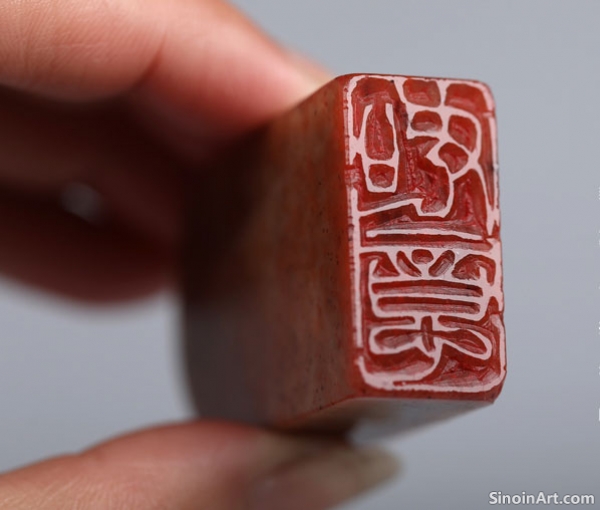The Use of Name Seals in Art and Calligraphy: Authentication and Expression
|
Name seals are not merely personal identifiers; they are integral to the art of Chinese painting and calligraphy. Traditionally, seals are stamped onto a finished artwork, serving multiple functions, including authentication, personal expression, and artistic enhancement. Understanding the different ways seals are used is essential to appreciating their role in Chinese art. They have become essential elements of Chinese painting and calligraphy.  One of the primary functions of a name seal is to authenticate a work of art. By stamping their seal on a painting or calligraphy piece, the artist signifies their ownership and attribution. The seal serves as a signature, a guarantee of authenticity that has been used throughout Chinese history. The seals help trace the work back to the original artist.  Beyond authentication, name seals also serve as a form of artistic expression. The placement, size, and style of the seal contribute to the overall aesthetic of the artwork. Seals can be used to add visual interest, balance, and a sense of completeness to a composition. The seals are integral to the visual and aesthetic qualities of the artworks.  The placement of seals on a work of art is often carefully considered. Seals are often placed in strategic locations to complement the composition, creating a visual balance and harmony. They can also be placed to enhance the design, providing balance, and adding dynamism. The use of multiple seals is also common in Chinese art. In addition to the artist’s name seal, other seals may be stamped onto the artwork, such as a studio seal or a collector’s seal. These multiple stamps add layers of historical and cultural meaning to the piece, providing additional provenance information. The use of name seals in art and calligraphy is an important part of Chinese cultural heritage. They serve as a connection between the artist, the artwork, and the viewers, enhancing the artistic and historical value of each piece. They are not merely practical devices, but add to the visual and artistic value of the works they are a part of. |
Tag : Seal Use in Art, Seal in Calligraphy, Authentication Seals, Chinese Art Seals, Artistic Expression
Related information
- Famous Leisure Seal Carvers and Their Unique Styles
- The Philosophy of Seal Carving: More Than Just Art
- The Symbolism in Seals: Decoding Meaning Through Design
- The Use of Seals in Chinese Culture: Beyond Identification
- The Historical Evolution of Name Seals: From Ancient Origins to Modern Practice
This article highlights the works of notable leisure seal carvers throughout history, discussing their innovative techniques, distinctive styles, and lasting contributions to the art of xiánzhāng.
This article explores the philosophical underpinnings of Chinese seal carving, examining its connection to Daoism, Confucianism, the concept of yin and yang, and the practice of meditative creation.
This article explores the symbolism within Chinese seal carving, focusing on the meaning of characters, imagery, composition, color, materials, and how they contribute to the artwork's message.
This article explores the various functions of Chinese seals (yinzhang) in Chinese culture, beyond mere identification, highlighting their use in government, business, art, and personal expression.
This article traces the historical development of name seals in China, from their early origins to their continued practice in modern times, highlighting key changes and developments in their design and usage.